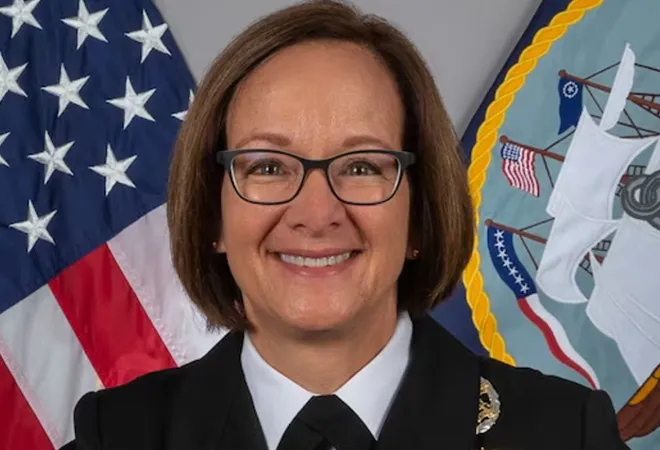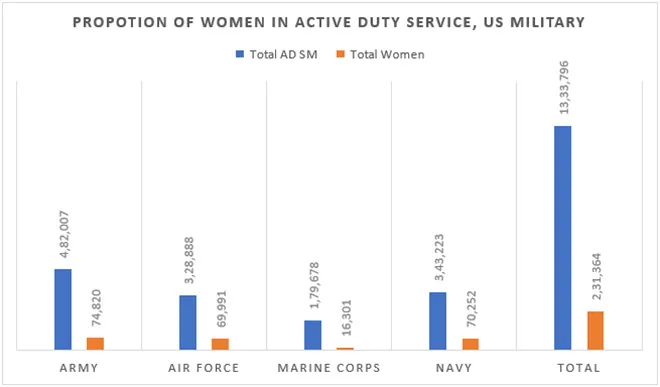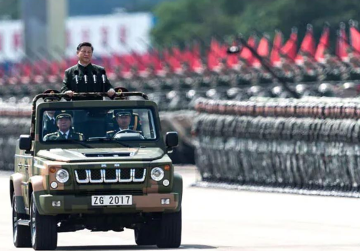
On 21 July, United States (US) President Joe Biden nominated Admiral Lisa Franchetti to serve as the US Chief of Naval Staff. The current
Vice Chief of Naval Operations, Adm Franchetti’s career s 38 years and reflects t the inclusion of women into the US armed forces. Commissioned in 1985, she joined the Navy at a time when women were allowed in few non-combat roles. Soon, the
US Congress dropped its opposition to women in the Navy serving on surface combatant ships and warplanes. Adm Franchetti also served on multiple destroyers, commanding the
USS Ross and later a squadron. As Admiral, she has commanded two different aircraft carrier strike groups, the US Sixth fleet in the Mediterranean, and prior to becoming the Navy’s Vice Chief, she served as the Director of Strategy, Plans, and Policy at the Joint Staff. President Biden’s announcement looked back on this storied career, highlighting her experience both in the operational and policy arenas.
The US Congress dropped its opposition to women in the Navy serving on surface combatant ships and warplanes.
When confirmed, she would become the first woman to lead the US Navy, as well as the first to serve as a permanent member of the Joint Chiefs of Staff. Adm Franchetti is, however, not the first woman to lead a branch of the American Armed Forces, the first being Adm Linda L. Fagan, commandant of the Coast Guard (the US Coast Guard comes under Homeland Security and not Joint Staffs). While women have
served as military service secretaries through political appointment, until Adm Fagan, no woman had served as the top uniformed officer, and until Adm Franchetti, as a permanent member of the Joint Chiefs of Staff.
A patriarchal roadblock
But between Adm Franchetti and military history, lies a rather patriarchal roadblock. The Senate, and, in particular, one Republican senator. Senator Tommy Tuberville of Alabama is currently blocking more than 270 military promotions over the Pentagon’s recently released abortion policy that
provides additional support to service members and dependents who must travel out of state to receive an abortion. With the US Senate—which is premised on the concept of unanimous consent and relies on agreements negotiated by party leaders for the largest proportion of matters—Senator Tuberville’s single ‘no’ outweighs the ‘yes’ of the rest of the house.
This action has stalled over 260 senior officer confirmations, and fears exist that the number may increase to 650 by the end of the year. Adm Franchetti joins the list of those awaiting confirmation including the
Chairman of the Joint Chiefs of Staff, the
Commandant of the US Marine Corps (the last time the Corps has been without a Commandant is over 100 years ago), and following her would be the new
Chief of Staff of the United States Army, once the current Chief’s term ends in August.
While women have served as military service secretaries through political appointment, until Adm Fagan, no woman had served as the top uniformed officer, and until Adm Franchetti, as a permanent member of the Joint Chiefs of Staff.
Women in the military
Globally, opportunities for women to serve in the military in general and the Navy in specific have been gradually expanding. A few militaries have had women reach the highest positions of decision-making; given that women were previously limited to support, medical, and administrative roles. A woman reaching the highest echelons of power in the United States military is undoubtedly reflective of a growing representation of women in the force, with 2022 US Defense statistics highlighting that one out of every six active-duty service members overall being a woman.
 Source: US Department of Defense
Source: US Department of Defense
Similar trends can be seen in India, especially after the country saw considerable strides in this direction over the last few years. The
February 2020 judgement of the Indian Supreme Court that enforced gender-neutral terms and conditions of service in the Indian Armed Forces is seen as the decisive event that changed the narrative of gender inclusivity in the armed forces. It allows women to enter the military right out of school, opens senior positions and permanent commission, and gives them equal access to combat roles. Today, the Indian Army has
7,093 women across different ranks and positions, the Indian Navy has 748 women officers including medical and dental officers, and the Indian Air Force has 1,636 women officers (exclusive of the medical and the dental branch).
The February 2020 judgement of the Indian Supreme Court that enforced gender-neutral terms and conditions of service in the Indian Armed Forces is seen as the decisive event that changed the narrative of gender inclusivity in the armed forces.
There has been an improvement both in numbers and the roles that women officers can take up. For instance, considered impossible just a few years ago, women officers can study at the National Defense Academy (India’s premier military academy that has produced 27 service Chiefs of Staff, and several gallantry award recipients). In January this year, women officers received command roles in the Indian Army—making them eligible to command units and troops and building the next step to the pathway to more senior roles. Making the Indian Armed Forces gender neutral with gender parity is still an ongoing process, but these are undoubtedly welcome steps.
Conclusion
In nominating Adm Franchetti to the highest position of the US Navy, the Biden administration has continued to push for a more diverse and societally representative American military. But the senate hold does crucially remind us of one thing—that for a truly inclusive military, it is not just crucial to have women in positions of power, but it is imperative to support, through ancillary polices and measures, systems that allow women to enter the force, be retained in the force, and reach positions of power in the force. Without this being done, leadership roles may only remain a token and hollow metric of women in the military.
Sitara Srinivas is a Junior Fellow with the Strategic Studies Programme at Observer Research Foundation
The views expressed above belong to the author(s). ORF research and analyses now available on Telegram! Click here to access our curated content — blogs, longforms and interviews.



 On 21 July, United States (US) President Joe Biden nominated Admiral Lisa Franchetti to serve as the US Chief of Naval Staff. The current
On 21 July, United States (US) President Joe Biden nominated Admiral Lisa Franchetti to serve as the US Chief of Naval Staff. The current 
 PREV
PREV

